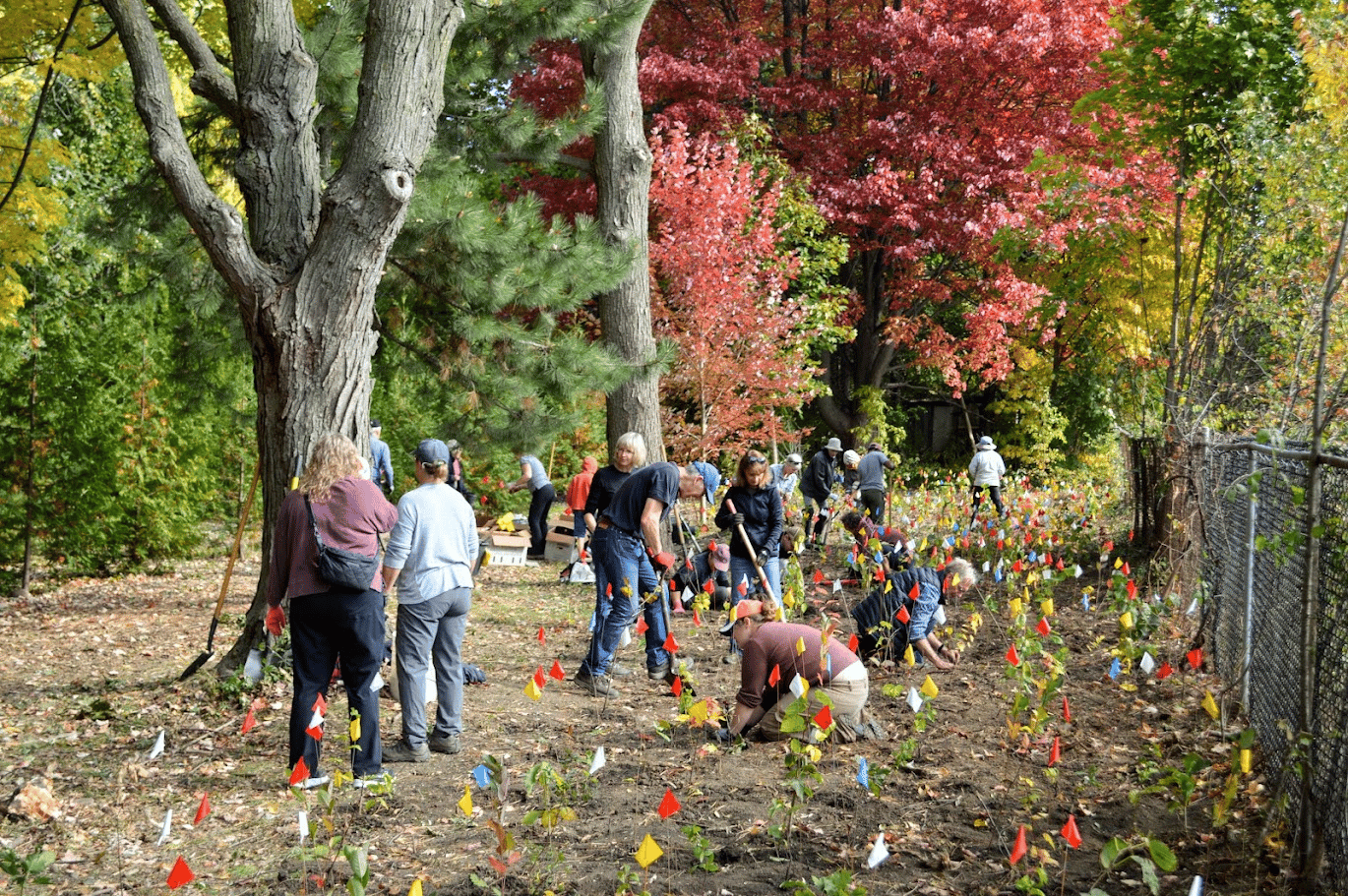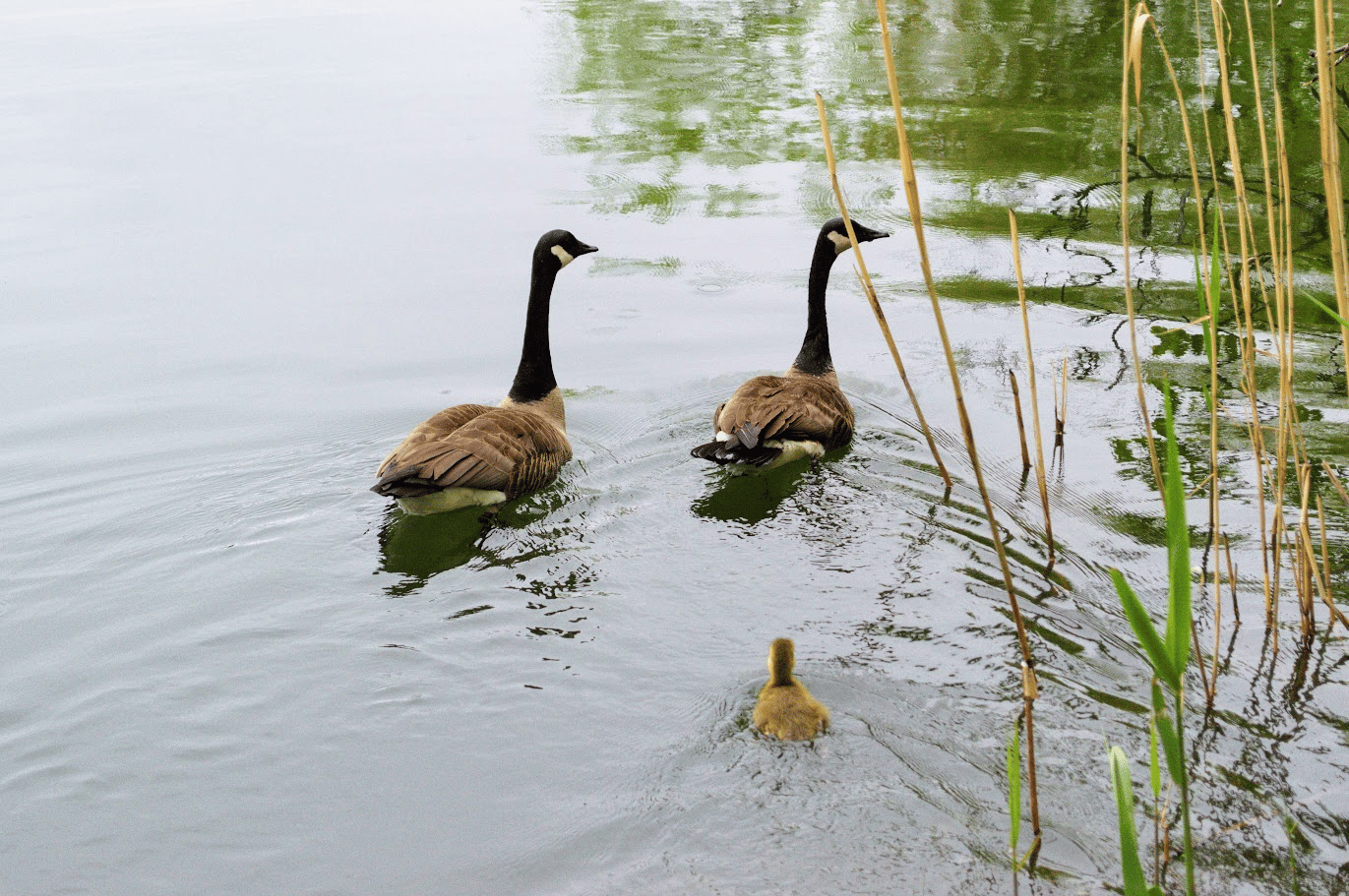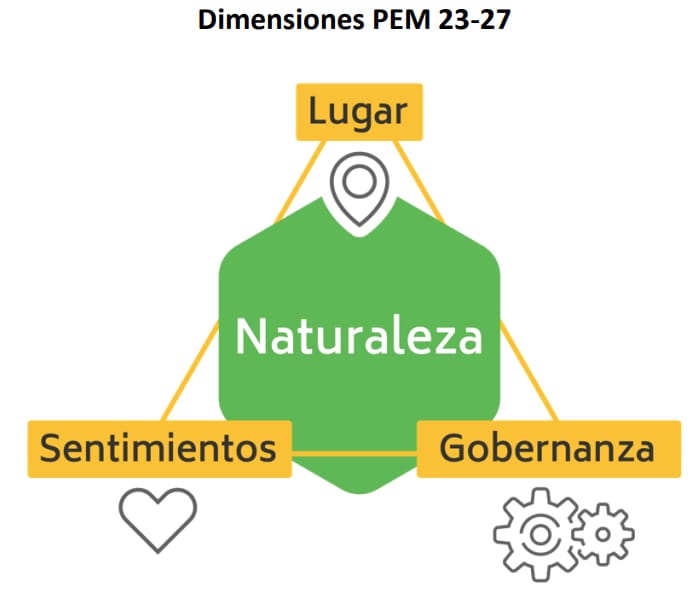- Little Forests Kingston
- Posts
- Planting season is around the corner!
Planting season is around the corner!
Help us plant Little Forests! Plus: learn about the City's Official Plan draft, and we won a Bird-Friendly City grant from Nature Canada!
Happy Mdaamin Giizis (Corn Moon) or Waatebagaa Giizis (Leaving Turning Colours Moon)! We hope that you’ll take the time to enjoy the fresh foods that the Land has gifted to us in this harvest season, as well as to express your gratitude to the Land and all our Earthly Kin for everything they do for us. This Moon also reminds us of the cycle of life and to protect the Land so that future generations can live here too.
Of course, we can’t mention corn without mentioning the Three Sisters. Corn is the backbone of the three sisters; she grows first, pushing ever towards the sky to support her younger sister, Bean, who follows her footsteps and climbs Corn’s stalk. Although Corn may be the leader of the three, she still depends on her younger siblings, Bean (who provides her with nitrogen) and Squash (who protects her roots and retains moisture). The three sisters are a powerful reminder of how we’re stronger when we collaborate and work together, and when we form diverse groups of people with different skillsets, using our strengths to support others and allowing others to support us in our weaknesses.
You can listen to Dan Kimewon, from Saugeen First Nation, on the southern edge of the Bruce Peninsula, share his corn teachings in this video:

Grenville Park Planting 2024
Planting month is coming up!
Hope your September is off to a good start! We’re now only a little more than a month away from our planting season for this year! Here’s what’s going on:
Grenville Park: Mark your calendars! The third and final phase of the Grenville Park Little Forest tree planting initiative will take place Saturday October 18 and Sunday October 19 from 9-4. We have 1,000 native shrub and tree seedlings arriving, so come on out and spend some time with neighbours and friends to help augment our City’s tree canopy! See you at the park on the corner of Westview and Grenville Roads in one of Kingston’s coolest communities. (BYO shovel, please).
Rodden Park: We will be planting 450 native trees and shrubs at Rodden Park, which will be our first ever Little Forest planted almost entirely by students from local schools! We may have some last checks and a few plants left over, so if you’d still like to help, come by on the morning of October 4th.
Future Little Forest Plans
Starr Reid Park (64 Drennan St) in Rideau Heights may be getting a Little Forest and even a Food Forest! Little Forests Kingston has been meeting with folks who want to see a Little Forest in this park and we have two more conversations scheduled for those who want to find out more and/or join the effort.
September 8 at Kingston Community Health Centres, 263 Weller from 7pm - 9pm
September 15 at Kingston Community Health Centres, 263 Weller from 7pm - 9pm
We hope you can come to these conversations but, if you can't but want to be involved, please email Judy Bierma at [email protected].
There are also folks in Kingscourt who want to start a Little Forest in their neighbourhood. Would you be interested in joining us? If so, please email [email protected].

Canada geese family in Montreal, QC
Bird-Friendly City Grant
We’re excited to announce that we, in partnership with the 1000 Islands Master Gardeners, have been selected for a small grant to help make Kingston a bird-friendly city by Nature Canada! It’s amazing to have their support. We’ll be using the grant money to organise a hedgerow-planting workshop and demonstration to promote the plants and habitats that can support our avian kin, and we will also be sending the attendees home with their own hedgerow-planting kit.
But that’s not all! We’ll also be demonstrating how to make windows bird-friendly, setting up a display at our local friendly bookstore, Novel Idea, publishing a guide on planting and stewarding pocket hedgerows, and making a handout explaining how to make your windows bird-friendly.
There’s lots of stuff coming up so stay tuned for updates on Facebook, Eventbrite, or the 1000 Islands Master Gardeners newsletter! If you’d like to attend the hedgerow-planting workshop, we’ll be sending out an application form very soon - there is a limited number of plants we can get with our grant, so the number of spaces for attendees will be limited.
Have your say on Kingston’s Official Plan!
A couple of months ago, we wrote about the City’s draft Natural Heritage Study (NHS), what it is, and how it could be improved. The draft NHS is part of a larger project which the city calls “YG220K”, named this way because the city’s human population is expected to grow to 220,000 people by 2051. This month, we’d like to talk about the first draft of Kingston’s Official Plan, which will guide the direction of the city for the next 25 years.
What is the Official Plan?
The Official Plan (OP) is focused on Land Use and Zoning - in other words, it defines what kinds of developments will be allowed, where they will be built, and what infrastructure changes will be made. The OP will affect how our communities will look in 5, 10, 20 years, so it’s important for us to raise our concerns and ask for changes to help us adapt to climate change and loss of biodiversity.
The City has also mentioned that the Integrated Mobility Plan (IMP) is being updated at the same time, and that although it is separate from the OP, they are intertwined. We won’t be talking about the IMP in this newsletter, but we encourage you to check out what they publish in the future and give your feedback anyways!

Roadside bioswale in Montreal, QC
What does the OP say about Nature?
The OP includes policy 2B3.1 among its guiding principles, which says that “[The OP] must be implemented in a way that (A) mitigates climate change, and (B) adapts to the impacts of a changing climate”. Guiding principles are the most general policies, and are meant to explain what the OP wants to achieve by implementing its other policies. There are a lot of policies in the OP, but here are some key takeaways about Nature:
New developments should incorporate forests/meadows that grow food for humans and community gardens, and existing developments are encouraged to convert lawns and hardscaping to gardens that support biodiversity and produce human food. (Policy 2C7)
New developments must plant a certain number of street trees, and are encouraged to incorporate Little Forests (Policy 5B1)
The City will collaborate with the Cataraqui Region Conservation Authority (CRCA) on watershed planning, which includes protecting and restoring water quality and quantity and preserving green infrastructure (Policy 6C1.2)
Creating bioswales and other green infrastructure for stormwater management is encouraged (Policy 6C2.5)
New surface parking lots must include planting strips and landscaped traffic islands (Policy 6D6.7)
New infrastructure developments and public works projects should incorporate green infrastructure (Policies 6E2.2(C) and 6F2.1)
New developments in greenfield areas (i.e. that are not infill developments) must provide ecological corridors in accordance with the Natural Heritage System (NHS) (Policy 7A2.1(G))
The draft also mentions that policies related to the NHS and the Parks and Recreation Master Plan are still in development and will be added later as those respective documents are revised. It’s nice to see the City encouraging developers to plant Little Forests, gardens, and other green spaces!
What else could the OP say about Nature?
It’s up to each of us to figure out what’s missing and tell the city what we’d like to see, but here are a few I’ve thought of when going through the report:
Throughout the OP, there are lots of spots where they provide requirements for green spaces, trees, etc., but these policies are still relatively unspecific of what kind of green space should be implemented. More specific guidance, such as planting 80% native plant species, or including a certain level of plant diversity in green spaces, would provide more habitat for biodiversity and support our Earthly Kin.
Commit to including natural spaces that support biodiversity in city parks (Under policy 2D2.2)
Recommend that schools integrate quality green spaces that support biodiversity and combat the urban heat island effect (Under policy 2D6.2)
Target the implementation of 3-30-300 in all new developments effective immediately and in an appropriate portion of existing developed areas (e.g. 65%) by 2040 (Under policy 2E2)
The OP in its current condition also is very human-centric, and neglects to consider the part that our Earthly Kin play in our community. Since the concept of empathising and collaborating with our Earthly Kin is pretty new to most of us, I’d encourage the City to include something on the topic of multispecies justice and collaboration among their guiding principles, and more detailed policies can be developed later.

Source: 2023-2027 Municipal Strategic Plan from Curridabat, Costa Rica. Image shows “Nature” in the centre, with “Place”, “Feelings”, and “Governance” around it.
The city of Curridabat in Costa Rica has already incorporated this kind of thing in their “Ciudad Dulce” (“Sweet City”) strategic plan, which is discussed in English in this article from the Nature journal. The plan includes “Nature” as one of the four key dimensions of their strategy, which is described as all living beings including humans, the climate, and the geology, as well as the relationships between them. The plan also states its intent to focus on biomimicry/biophilia in design, understand and respect natural systems and phenomena, recognise Nature as a source of prosperity and wellbeing, and view “ecosystem services” as the most important and valuable service that a city can provide. They also put you in the shoes of different residents of the city, including a bee, the soil, and a drop of water. Each of these residents explained how they feel about the current state of affairs in the city, and what a happy life would look like for them. Then, goals and policies were developed based on how those residents would like to live.
I think if the City were able to translate the wellbeing of all residents, including our Earthly Kin, into explicit guiding principles, and, as a result, specific objectives contained in the OP, we would truly be on a path to transforming Kingston into a City in a Forest.
If you’d like to take a deeper dive into Curridabat’s strategic plan, but can’t speak Spanish (like myself), there are several free online PDF translation websites which you can use - they aren’t perfect, but they work well enough to get the big picture.
What now?
There’s a lot to unpack in the OP, and we’ll have to wait for another draft for some things, but hopefully you now have a bit of an idea of what is and isn’t in the OP. If you’d like to give feedback, you can find the Official Plan, as well as lots of other documentation and information on Get Involved Kingston’s YG220K page. You can add comments directly on the document for them to review, and if you are having trouble with that, you can ask them to provide another format for your comments by sending an email to [email protected] or calling 613-546-0000.
-Robert


